What Is SVG? Guide to SVG Files
Office 365: Daily Tasks Made Simpler
September 9, 2021How To Shop For The Best Leggings?
September 9, 2021Although it was conceived back in the late Nineties, SVG is in many ways the “ugly duckling” file format that grew as much as develop into a swan. Poorly supported and largely ignored for a lot of the 2000s, things have changed since 2017. All fashionable web browsers now render SVG without points, and most vector drawing apps supply the option to export it. SVG has grow to be a widely used image format on the Web.
This hasn’t happened by chance. Though traditional raster graphic file formats like JPGs and PNGs are perfect for images or very complex images, it seems that SVG is the one format that meets right this moment’s web development demands of scalability, responsiveness, interactivity, programmability, performance, and accessibility.
SVGs could be a lot smaller than 60KB, of course. This bigger illustration helps us make some extent about SVG’s flexibility, but it’s an ideal format for icons and interface parts, some of which might not even weigh a full kilobyte.
SVG is an eXtensible Markup Language (XML)-based vector graphic format for the Web and different environments. XML uses tags like HTML, although it’s stricter. You can not, for example, omit a closing tag since this will make the file invalid and the SVG won’t be rendered.
As you can see, under the hood, SVG documents usually are nothing more than simple plain textual content files that describe lines, curves, shapes, colours, and text. As it’s human-readable, easily understandable and modifiable, when embedded in an HTML document as an inline SVG, SVG code will be manipulated via CSS or JavaScript. This provides SVG a flexibility and versatility that may’t ever be matched by traditional PNG, GIF or JPG graphic formats.
SVG is a W3C commonplace, which means that it can inter-operate simply with different open standard languages and applied sciences together with JavaScript, DOM, CSS, and HTML. As long as the W3C sets the global trade standards, it’s likely that SVG will continue to be the de facto commonplace for vector graphics in the browser.
What about HTML5’s Canvas? These technologies are very different, but this question understandably comes up often. We’ve broken down the needs, pros, and cons of every in SVG vs Canvas so you could have the understanding to make the right alternative each time.
Why Should You Use SVG?
The awesomeness of SVG is that it can remedy most of the most vexing problems in trendy web development. Let’s breeze via some of them.
Scalability and responsiveness
Under the hood, SVG makes use of shapes, numbers and coordinates moderately than a pixel grid to render graphics within the browser, which makes it resolution-impartial and infinitely scalable. Should you think about it, the directions for creating a circle are the identical whether you’re utilizing a pen or a skywriting plane. Only the scale changes.
With SVG, you possibly can mix totally different shapes, paths and text elements to create all kinds of visuals, and also you’ll be sure they’ll look clear and crisp at any size.
In distinction, raster-based mostly codecs like GIF, JPG, and PNG have fixed dimensions, which cause them to pixelate after they’re scaled. Though various responsive image techniques have proved valuable for pixel graphics, they’ll by no means be able to really compete with SVG’s ability to scale indefinitely.
Programmability and interactivity
SVG is totally editable and scriptable. All kinds of animations and interactions could be added to an inline SVG graphic via CSS and/or JavaScript.
Accessibility
SVG files are text-primarily based, so when embedded in a web page, they can be searched and indexed. This makes them accessible to screen readers, search engines like google and yahoo and different devices.
Efficiency
Some of the important points impacting web performance is the scale of the files used on a web page. SVG graphics are normally smaller in dimension compared to bitmap file formats.
When you have any kind of issues concerning where by and how you can make use of monogram alphabet, you’ll be able to e mail us in our webpage.

